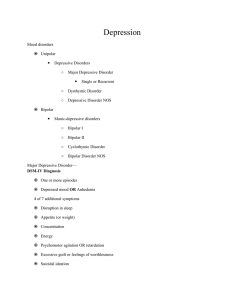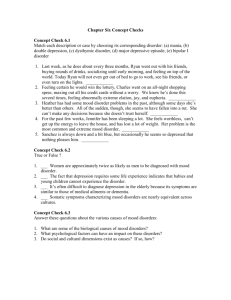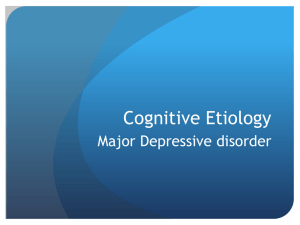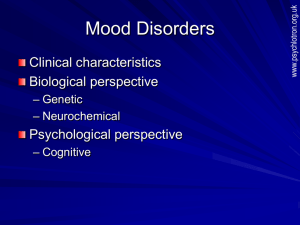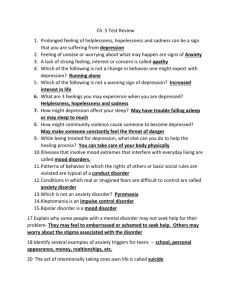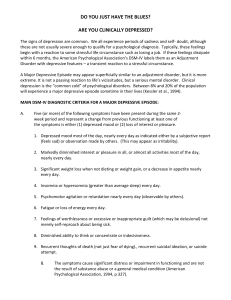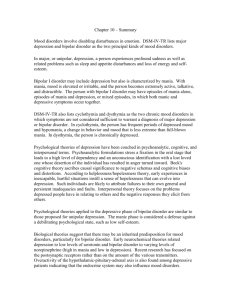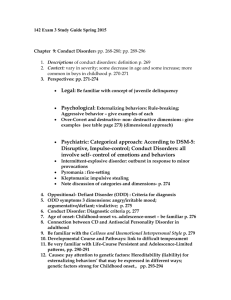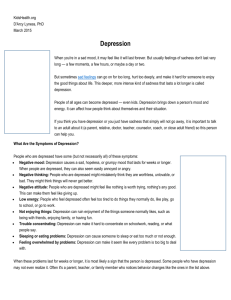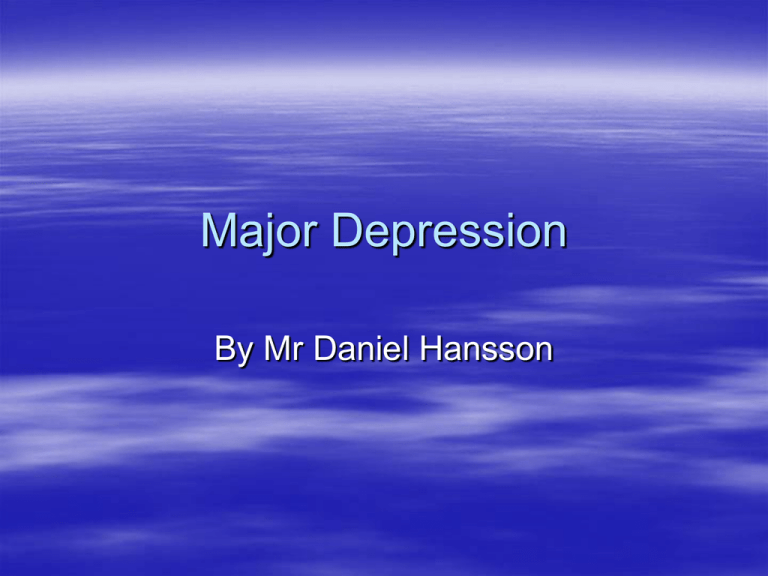
Major Depression
By Mr Daniel Hansson
Major Depression
Symptoms
Prevalence
Etiology
Evaluation
Conclusion
Symptoms (DSM-IV-TR)
Affective: Feelings of guilt and sadness, lack of
enjoyment or pleasure in familiar activities or
company
Behavioural: Passivity, lack of initiative
Cognitive: Frequent negative thoughts, faulty
attribution of blame, low self esteem, suicidal
thoughts, irrational hopelessness, difficulties in
concentration and inability to make decisions
Somatic: Loss of energy, insomnia, or
hypersomnia, weight loss/gain, diminished sex
drive
Symptoms
One or two major
depressive episodes
At least two weeks of
depressed mood or
loss of interest
accompanied with at
least four additional
symptoms of
depression
Prevalence
Life time prevalence for the disorder: Women –
10-25% Men – 5-12%
The average age to have the first major
depression: Mid 20s
The onset age is decreasing
One episode: 60 % of a second
Two or three episodes: 70-90 % of a following
episode
One year after diagnosis: 40 % are free of
symptoms, 20 % have some symptoms, 40 %
meet full criteria of the disorder
Prevalence
More common in individualistic than collectivistic
cultures
Seattle, Washington: 6.3 %
China: 4 %
Verona, Italy: 4.7 %
Groningen, Germany: 15.9 %
Manchester, United Kingdom: 16.9 %
Ankara, Turkey: 11.6 %
Nagasaki, Japan: 2.6 %
Etiology
Biological
Cognitive
Sociocultural
Biological
Genetic and
biochemical factors in
depression
E.g. Caspi (2003),
Lykken & Tellegen
(1996)
Cognitive
A depressed mood may lead to depressed
thoughts
Depressed cognitions, cognitive distortions,
and irrational beliefs produce disturbances
in mood
E.g. Goldapple (2004), Lyon & Woods
(1991)
Sociocultural
Social and cultural
factors affect the
prevalence and
manifestation of the
disorder
E.g. Harris (1978),
Cutrona, Wallace, &
Wesner (2006)
Evaluation
+Can be used for therapy
+Supporting research
-Methodological problems with research
-Simplistic: Each perspective emphasizes one
factor
Conclusion
An interactionistic explanation of major
depressive disorder is preferable, e.g. the
diathesis-stress model or the
biopsychosocial model

